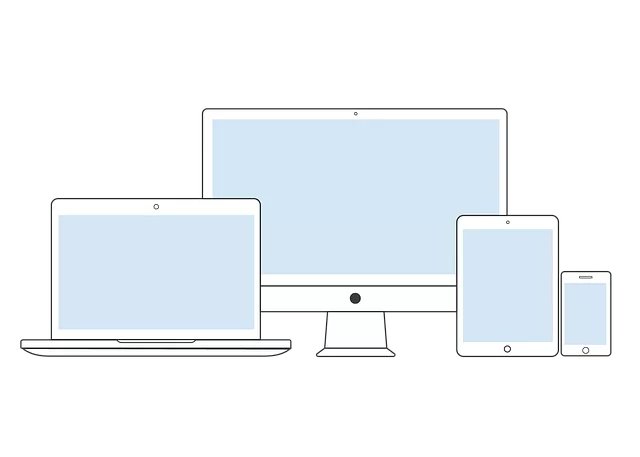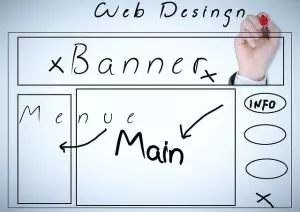In today's digital era, microinteractions, minimalist aesthetics, adaptability, Voice User Interfaces (VUI), Dark Mode, 3D graphics, and VR are shaping the latest web design trends. These elements enhance user experiences by offering engaging subtleties, simplifying navigation, improving accessibility, and providing immersive interactions. By integrating these trends, developers create dynamic interfaces that captivate users, foster engagement, and ensure successful online presences.
In the ever-evolving digital landscape, staying ahead with the latest web design trends is paramount for capturing user attention. From microinteractions that enhance UX through tiny animations to minimalist designs that prioritize simplicity and adaptability across devices, this article explores six cutting-edge features redefining modern web experiences. Discover how Voice User Interfaces (VUI), Dark Mode preferences, 3D graphics, and interactive elements are transforming websites into immersive, engaging destinations.
Microinteractions: Enhancing User Experience with Tiny Animations

In today’s digital landscape, microinteractions are a key element in enhancing user experiences across various platforms, including websites. These tiny animations, often subtle and brief, add a layer of engaging interactivity to web design, making interfaces more intuitive and responsive. By integrating microinteractions into latest web design trends, developers can create dynamic and captivating user journeys. A simple tap or hover can trigger a subtle animation, providing users with immediate visual feedback and elevating their overall experience.
From loading spinners that transform as data loads to playful animations during form submissions, these microinteractions not only make interfaces more aesthetically pleasing but also foster a sense of control and satisfaction for users. As web design continues to evolve, incorporating such intricate yet impactful details becomes crucial in keeping visitors engaged and encouraging them to explore further within a website.
Minimalist Design: Embracing Simplicity for Modern Websites

In the realm of modern web design, minimalist aesthetics have emerged as a powerful trend, capturing the essence of simplicity and elegance. This approach, characterized by clean lines, ample white space, and a focus on essential elements, is not just a style but a strategic choice for developers aiming to create visually appealing and user-friendly websites. By embracing minimalism, designers are able to highlight content, making it more accessible and digestible for visitors, which aligns with the latest web design trends.
Minimalist design simplifies navigation, ensuring users can effortlessly find their way through the site. This strategy not only enhances user experience but also improves page load times, another factor that contributes to a website’s success in today’s digital landscape. By cutting away the excess and focusing on what truly matters, minimalist web design allows for a more refined and impactful online presence, making it a preferred choice among businesses and creators looking to make a lasting impression with their latest web design trends.
Adaptive Layouts: Designing for Flexibility Across Devices

In today’s digital landscape, the latest web design trends are driven by a need for adaptability and responsiveness. Adaptive layouts have emerged as a key feature, ensuring that websites seamlessly adjust to different screen sizes and devices, from desktops to smartphones and tablets. This flexibility is not just about aesthetics; it significantly enhances user experience by providing a consistent and accessible interface regardless of the platform.
By implementing fluid grids, flexible images, and responsive typography, designers can create layouts that adapt gracefully. These techniques allow content to re-arrange itself for optimal viewing, ensuring users aren’t compromised when accessing websites on their mobile devices. Such adaptability is not just a trend but a necessity, given the ever-growing mobile web traffic, making it a cornerstone of successful web design strategies in the current era.
Voice User Interfaces (VUI): The Future of Web Interaction

Voice User Interfaces (VUI) are rapidly gaining traction as one of the most promising latest web design trends, transforming how users interact with digital spaces. By leveraging natural language processing and machine learning, VUI enables hands-free, intuitive navigation and data retrieval, enhancing accessibility and user experience. Imagine asking your device to check email, play music, or find local restaurants—all through simple voice commands. This trend is particularly significant in today’s fast-paced world where multitasking and on-the-go access are the norm.
As the field of artificial intelligence continues to evolve, so does VUI technology. The future of web interaction looks set to be more conversational and personalized, with VUIs adapting to individual user preferences and accents. This shift towards voice-activated interfaces promises not only convenience but also a more inclusive digital environment for users with visual or motor impairments. In the context of the latest web design trends, VUI represents a significant step forward in making online experiences more accessible and engaging for all.
Dark Mode and Color Schemes: Catering to User Preferences

In the realm of web design, catering to user preferences has become a key aspect of creating engaging and accessible websites. One of the most prominent features gaining traction is Dark Mode. This design choice not only offers a visually appealing aesthetic but also caters to users’ varying preferences and helps reduce eye strain, especially in low-light environments. By providing an option for dark color schemes, web designers can ensure that their sites are inclusive and user-friendly.
The latest web design trends heavily emphasize customizable color palettes, allowing users to select themes that align with their personal tastes. This flexibility not only enhances user experience but also contributes to better accessibility by accommodating individuals with visual impairments or those who prefer a less bright screen environment. As designers embrace these preferences, they create more inclusive and comfortable digital spaces for all visitors.
3D Graphics and Virtual Reality (VR) Integration: Pushing Boundaries

The integration of 3D graphics and Virtual Reality (VR) is a significant shift in the latest web design trends, pushing the boundaries of digital experiences. This immersive technology allows designers to create visually stunning and interactive environments that captivate users like never before. Websites are evolving from static pages to dynamic, three-dimensional spaces where visitors can explore and engage with content in a whole new way.
With VR gaining popularity, web developers have an exciting opportunity to immerse audiences in their online experiences. From 3D product demonstrations to virtual tours of spaces, this technology offers endless creative possibilities. As the web design landscape continues to evolve, embracing these innovative features can help businesses stay ahead of the curve and provide users with truly remarkable digital encounters.
Interactive Elements and Micro-Interactions: Creating Engaging Experiences

In the realm of latest web design trends, interactive elements and micro-interactions play a pivotal role in enhancing user engagement. These dynamic features transform static websites into vibrant experiences, fostering deeper connections with visitors. By incorporating subtle animations, hover effects, and responsive gestures, designers can create a sense of dynamism that keeps folks hooked. Interactive elements, such as customizable sliders and intuitive forms, not only make navigation more enjoyable but also encourage users to explore different sections of the site.
Micro-interactions, on the other hand, are brief yet meaningful animations that occur in response to user actions. These tiny gestures can include button presses revealing hidden content or visual feedback after form submissions. Such micro-interactions add a layer of refinement and immediacy to web design, making interactions feel more intuitive and satisfying. In today’s digital era, where attention spans are limited, these engaging experiences become game changers in capturing and retaining user interest.
